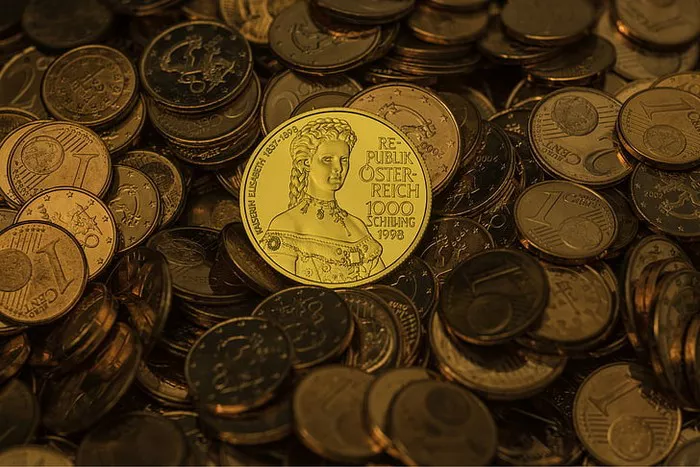Gold jewelry is a timeless investment and adornment, but with the rise of counterfeit products, knowing how to test its authenticity is crucial. Among the various purities of gold, 18K gold is a popular choice, offering a balance of beauty and durability. In this article, we will explore effective methods to test 18K gold at home, ensuring you can verify its authenticity without the need for professional equipment or extensive knowledge.
Understanding 18K Gold
What is 18K Gold?
18K gold consists of 75% pure gold and 25% alloyed metals, such as copper, silver, or palladium. The purity is denoted as 18 karats, indicating a high gold content. This alloy provides strength and durability, making it suitable for various jewelry applications.
Characteristics of 18K Gold
Color: Typically yellow or white, depending on the alloy used.
Durability: More resistant to scratching and tarnishing than higher karat gold.
Value: Holds a significant value due to its high gold content.
Why Test Gold at Home?
Testing your gold at home can save time and money, especially if you’re unsure about its authenticity. This can help you:
Prevent Fraud: Ensure that you are not overpaying for gold jewelry.
Maintain Value: Protect your investment by confirming purity.
Gain Peace of Mind: Verify family heirlooms or pieces purchased from unknown sources.
Methods to Test 18K Gold at Home
1. Visual Inspection
What to Look For:
Hallmarks: Check for stamps indicating the karat, such as “18K,” “750,” or other manufacturer marks. Authentic 18K gold should display a hallmark.
Color Consistency: Genuine gold has a consistent color. Look for any discoloration or uneven tones that might suggest plating.
Weight: Real gold is dense. If a piece feels unusually light for its size, it may be fake.
Tips for Visual Inspection:
Use a magnifying glass to examine hallmarks closely.
Compare with known gold pieces if possible.
2. Magnet Test
Gold is not magnetic. To perform the magnet test:
Gather a Magnet: Use a strong magnet, such as a neodymium magnet.
Test the Gold Piece: Hold the magnet near the gold item. If it is attracted to the magnet, it is likely not genuine gold.
Limitations:
Some non-gold metals can also be non-magnetic, so this test should be used in conjunction with other methods.
3. Acid Test
The acid test is one of the most reliable methods for testing gold purity at home. You will need:
Gold Testing Kit: Available at jewelry supply stores or online, typically includes testing acids and a testing stone.
Testing Stone: A smooth surface to scratch the gold on.
Steps to Perform the Acid Test:
Scratch the Gold: Gently scratch the gold item on the testing stone to leave a small mark.
Apply Acid: Drop a small amount of the 18K testing acid onto the scratch mark.
Observe the Reaction:
If the mark remains bright and unchanged, the gold is likely 18K or higher.
If it turns green or disappears, the piece is likely of lower quality or not gold.
Safety Precautions:
Wear gloves and eye protection, as testing acids can be corrosive.
Work in a well-ventilated area.
4. Density Test
Gold has a specific density that can be measured at home. The formula for density is:
Density= Mass/Volume
Steps to Perform the Density Test:
Weigh the Gold Piece: Use a precise scale to determine its weight in grams.
Water Displacement Method:
Fill a graduated cylinder or a measuring cup with water.
Record the initial water level.
Submerge the gold piece completely and record the new water level.
The difference in water level will give you the volume of the gold piece.
Calculate Density: Divide the weight by the volume.
Density Values for Gold:
18K gold has a density of approximately 15.6 to 15.9 grams per cubic centimeter (g/cm³).
5. The Nitric Acid Test
This test is more advanced and should be conducted with caution. It involves using nitric acid to confirm gold content.
Steps for the Nitric Acid Test:
Scratch the Gold: Similar to the acid test, scratch the gold on a testing stone.
Apply Nitric Acid: Use nitric acid on the scratch mark.
Observe the Reaction:
If the gold dissolves, it is not genuine.
If it remains unchanged, it is likely real gold.
Safety Measures:
This test involves handling strong acids; ensure proper protective gear is worn.
6. Sound Test
Gold produces a distinct sound when tapped, different from other metals.
Steps to Perform the Sound Test:
Tap the Gold Item: Use a hard surface to gently tap the gold piece.
Listen for the Sound: Authentic gold produces a deep, ringing sound, whereas fake gold will sound dull.
7. Comparison Test
If you have access to a known piece of 18K gold:
Compare Weight and Color: Hold both pieces and assess their weight and color. They should feel and look similar.
Conduct the Other Tests: Use any of the previously mentioned methods on both pieces for comparison.
Conclusion
Testing 18K gold at home can be straightforward and effective with the right methods. From visual inspections to more sophisticated acid tests, each method offers unique insights into the authenticity of your gold pieces.
Related topics:
- Understanding the Value of 10K Gold: A Comprehensive Guide
- Best Strategies for Gold Scalping: A Comprehensive Guide
- How Easy Is It to Sell Gold Bars? A Comprehensive Guide


